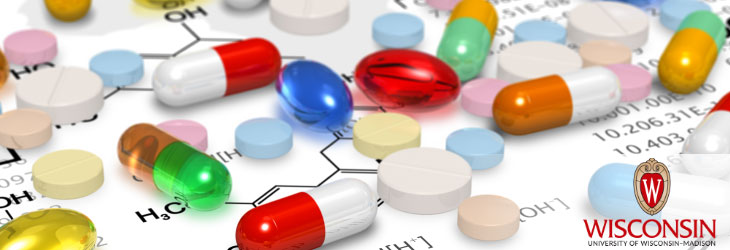Therapeutics & Vaccines

Safer Ebola Virus and Vaccines
WARF: P07377US02
Inventors: Yoshihiro Kawaoka, Peter Halfmann, Jin Hyun Kim
The Wisconsin Alumni Research Foundation (WARF) is seeking commercial partners interested in developing replication-incompetent filovirus that is safer to handle and can be used to make new vaccines.
Overview
Ebola is the deadliest virus on earth. It has caused death in 90 percent of cases during some outbreaks, afflicting human and great ape populations in tropical Africa. The virus is highly contagious in aerosol form and ranks with anthrax as a potentially devastating bioweapon.
While the first Ebola vaccine is under development, studying the virus entails stringent (biosafety level-4) containment protocols exceeding the resources of most laboratories. Surrogates have been utilized in place of the authentic virus, but this has hampered basic research with Ebolaviruses as well as the development of vaccines and large-scale screening for effective antivirals.
Producing new Ebola vaccines and expanding research will require genetically manipulating a safer form of the virus.
While the first Ebola vaccine is under development, studying the virus entails stringent (biosafety level-4) containment protocols exceeding the resources of most laboratories. Surrogates have been utilized in place of the authentic virus, but this has hampered basic research with Ebolaviruses as well as the development of vaccines and large-scale screening for effective antivirals.
Producing new Ebola vaccines and expanding research will require genetically manipulating a safer form of the virus.
The Invention
UW–Madison researchers have developed recombinant, biologically-contained Ebola ‘ΔVP30’ virus for use as a vaccine and research tool. The infectious virus cannot spread because it is made to lack a gene essential for transcription.
Specifically, sequences encoding the protein VP30 are deleted from the virus genome, making it unable to replicate. Prepared and administered pharmaceutically, the modified virus evokes an antibody response against Ebola virus glycoprotein, GP. Selectable markers, reporters and other heterologous sequences can be inserted into the genome.
Specifically, sequences encoding the protein VP30 are deleted from the virus genome, making it unable to replicate. Prepared and administered pharmaceutically, the modified virus evokes an antibody response against Ebola virus glycoprotein, GP. Selectable markers, reporters and other heterologous sequences can be inserted into the genome.
Applications
- Producing vaccines for Ebola and other diseases
- Viral mutagenesis studies
- Drug screening
- Gene therapy vectors
Key Benefits
- Vaccine/virus is genetically stable and safe.
- Resembles wild-type virus in life cycle, morphology and growth
- Can be grown to reasonably high titers in helper cells
- Can be handled outside a biosafety level-4 environment
Stage of Development
Vaccine ΔVP30 provided 100 percent protection in mice exposed to Ebola virus. It generated antibody response to the viral glycoprotein, GP, as well as T-cell response to viral nucleocapsid protein, NP.
Additional Information
Related Technologies
Tech Fields
For current licensing status, please contact Jennifer Gottwald at [javascript protected email address] or 608-960-9854